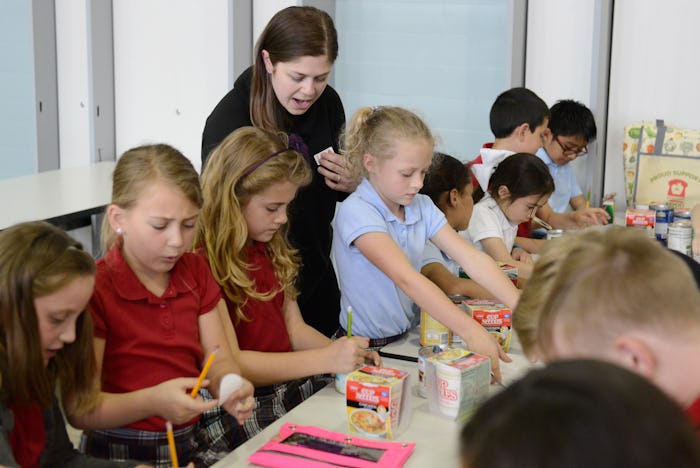Life

Project-Based Learning Could Solve Standardization
Learning in the classroom can either be a source of excitement and curiosity, or a dreaded, standardized task that leaves kids drained and discouraged. Luckily, a move towards project-based learning could help bring kids' education into the 21st Century, merging real-world subjects together and building up their technology, research, and communication skills. But exactly what is project-based learning?
As teacher and author Heather Wolpert-Gawron wrote in a 2015 Edutopia post, "You know the hardest thing about teaching with project-based learning? Explaining it to someone." At its core, however, project-based learning moves away from the traditional method of teaching different subjects individually, or studying math at 9 a.m., history at 10 a.m., and literature at 11 a.m. Instead, students start with a theme, research a real-world problem associated with it, and come up a solution by compiling evidence and delving into multiple subjects, according to Edutopia. Instead of memorizing facts for an exam at the end of the term, they present their evidence-based solutions to their classmates using multimedia tools (or other innovative technology) and evaluate one another.
"Traditionally, learning has been defined as a list of subject matters and facts you need to acquire — such as arithmetic and grammar — with some decoration, like citizenship, built in around it," Kirsti Lonka, a professor of educational psychology at Helsinki University, told the BBC recently. She continued:
But when it comes to real life, our brain is not sliced into disciplines in that way; we are thinking in a very holistic way. And when you think about the problems in the world — global crises, migration, the economy, the post-truth era — we really haven't given our children the tools to deal with this inter-cultural world.
Essentially, project-based learning tries to update education to more intuitively line up with the real world kids will encounter outside of the classroom. In one Finnish school that has made the move to project-based learning, for instance, kids last year tackled the (very) relevant topic of immigration. According to the BBC, the students surveyed local people's opinions, synced up with German students via video, and interviewed asylum seekers at a local immigration center.
The move to try project-based learning has seeped into the United States, as well. In Massachusetts, students at Stony Brook Middle School researched Middle Eastern issues and presented their solutions at a mock United Nations meeting. Their sixth grade class used design engineering in their science class to solve problems they'd learned about in social studies, according to The Westford Eagle. Several public schools in Spokane, Washington, have made similar moves toward project-based learning.
Despite the spread of pilot projects across the country, project-based learning certainly has its critics, as well. In Spokane, one pilot PBL project has given students higher state scores in both English and language arts, but saw them lagging in math skills, according to Inlander. Critics argue that project-based learning can take up too much valuable classroom time, cost too much, and leave low-performing students behind. But according to the Association for Supervision and Curriculum Development, research has shown that — while project-based learning requires more classroom time and a higher amount of support for teachers — it can increase scores across subjects, reduce anxiety and increase positivity towards math, and erase the correlation between students' economic level and their academic performance.
Even if a school doesn't have a pilot study in place, educators and parents can encourage students to connect lessons to current events. If you're interested in learning more about project-based learning and supporting it in your community, you can learn about how to support project-based learning in schools across the United States and get involved in your kids' education.